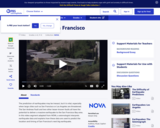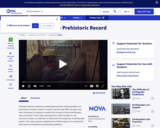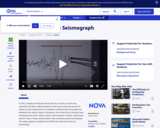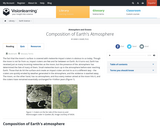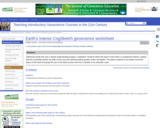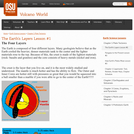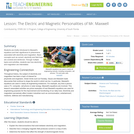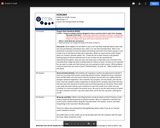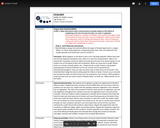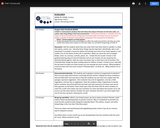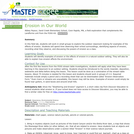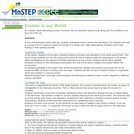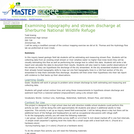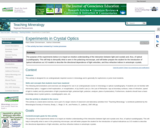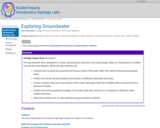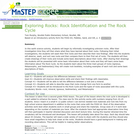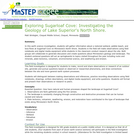The Earth's Interior worksheet involves the layers of the Earth and is meant to help students: 1) Draw the layers of the Earth true-to-scale (on an image with a scale bar), and 2) Grasp the size of the Earth by starting at a somewhat familiar scale (the upper 40km of the crust) and progressively adding layers and increasing the scale to the radius of the Earth (~6,400km). Moving from the familiar to the unfamiliar has been shown to be an effective strategy to understand large magnitudes (Resnick, Shipley, Newcombe, Massey, & Wills, 2012).
Starting at the surface, the student adds layers of the earth as the scale increases (40km, 400km, 700km, 3,000km, and 6,400km). The layers include the base of continental crust, upper mantle, transition zone, lower mantle, and the outer core, as well as drawing the height of a building at the surface to help gain perspective as the scale changes. Students also complete 3 multiple choice questions at the end of the worksheet to solidify and focus on goals and important concepts.
This worksheet uses the sketch-understanding program with built-in tutor: CogSketch. Therefore, students, instructors, and/or institution computer labs need to download the program from the CogSketch website: http://www.qrg.northwestern.edu/software/cogsketch/. At any point during the worksheet, students can click the FEEDBACK button and their sketch is compared to the solution sketch. The built-in tutor identifies any discrepancies and reports pre-written feedback to help the student correct their sketch until they are done with the activity. Once worksheets are emailed to the instructor, worksheets can be batch graded and easily evaluated. This program allows instructors to assign sketching activities that require very little time commitment. Instead, the built-in tutor provides feedback whenever the student requests, without the presence of the instructor. More information on using the program and the activity is in the Instructor's Notes.
We have developed approximately two dozen introductory geoscience worksheets using this program. Each worksheet has a background image and instructions for a sketching task. You can find additional worksheets by searching for "CogSketch" using the search box at the top of this page. We expect to have uploaded all of them by the end of the summer of 2016.
(Note: this resource was added to OER Commons as part of a batch upload of over 2,200 records. If you notice an issue with the quality of the metadata, please let us know by using the 'report' button and we will flag it for consideration.)
